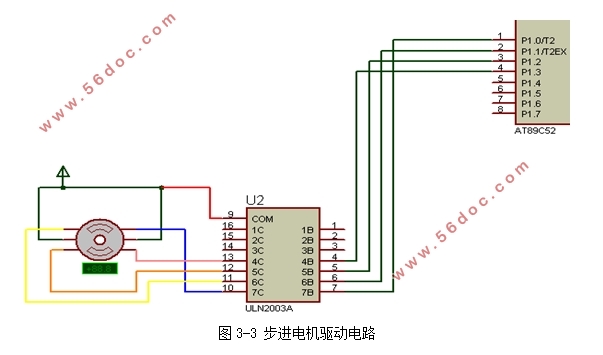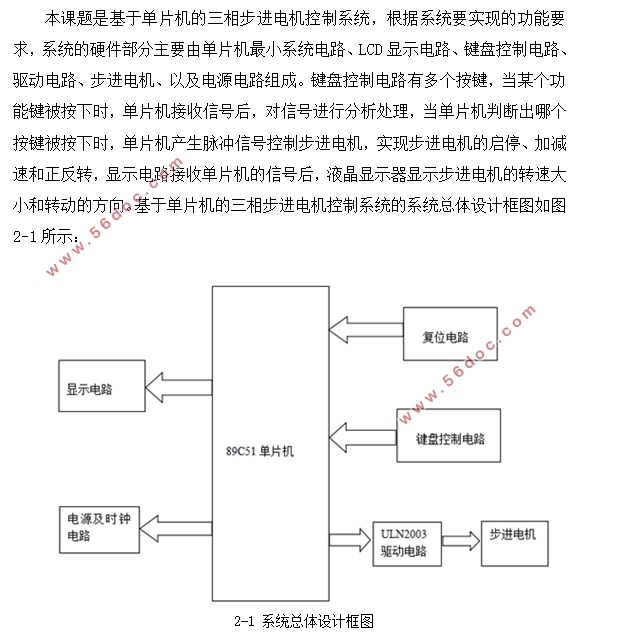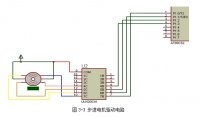基于单片机的三相步进电机控制系统的设计(论文10000字)
摘 要
步进电机广泛应用于计算机、微电子技术和自动化控制系统中,步进电机作为执行元件,在机电一体化中是不可或缺的关键产品。步进电机将电脉冲信号转变成角位移或线位移,它利用输入脉冲的频率与电机转速成正比例的特征,来实现对步进电机精确调速,因此非常适合单片机控制。基于单片机设计的控制系统可以实现步进电机转动速度、转动方向等方面较复杂的控制。
本论文设计一个基于89C51单片机的三相步进电机控制系统,实现了对步进电机的加速、减速、开始、停止和运行方向的精确控制。该系统以89C51单片机为核心,设计运用结合了单片机原理,数字电路,模拟电路等进行模块化设计;以单片机、步进电机、LCD1602液晶显示屏、ULN2003达林顿管为主要硬件,以Keil μVision4集成开发环境为软件开发系统,本文主要介绍了步进电机控制系统的设计方案与器件选型,硬件设计、软件设计和硬件调试。
关键词: 步进电机 单片机达 林顿管 液晶显示
The design of three-phase stepper motor control system
based on the MCU
Abstract
Stepper motors are widely used in computers, microelectronics and automation control systems.Stepper motorsas actuators is an indispensable key products in mechatronics.Stepper motor converts electrical signals into pulses angular displacement or linear displacement ,which uses the characteristic that motor speed is proportional to the input pulse frequencyto achieve the exact speed of the stepper motor , so it is suitable for SCM.Microcontroller-based control system can be designed to achieve more complex control , such as the stepper motor speed, direction of rotation and so on.
This paper designed a three-phase stepping motor control system based on 89C51 for stepper motor acceleration, deceleration, start, stop, and direction for precise control. With 89C51 microcontroller as the core of the system, the designusing foundation of microcontroller, digital circuits, analog circuits.The microcontroller , stepper motor , LCD1602 LCD display , ULN2003 Darlington as the major hardware,Keil μVision4 integrated development environment for software development system.This paper describes design and component selection, hardware design, software design, hardware debugging for the stepper motor control system.
Keywords: Stepper motor; Microcontroller; Darlington tube; LCD display
系统总体设计
本课题是基于单片机的三相步进电机控制系统,根据系统要实现的功能要求,系统的硬件部分主要由单片机最小系统电路、LCD显示电路、键盘控制电路、驱动电路、步进电机、以及电源电路组成。键盘控制电路有多个按键,当某个功能键被按下时,单片机接收信号后,对信号进行分析处理,当单片机判断出哪个按键被按下时,单片机产生脉冲信号控制步进电机,实现步进电机的启停、加减速和正反转,显示电路接收单片机的信号后,液晶显示器显示步进电机的转速大小和转动的方向。
论文结构
论文第一章首先阐述了课题的背景并且分析了课题的意义,明确本课题的研究价值和将来的应用领域。
第二章针对系统的基本框架展开论述,完成了系统的硬件结构设计,并对系统的主要控制器件进行了选型和方案的确定,对器件的基本参数有较为完整的介绍。
第三章对系统硬件电路的设计,按照功能和模块分成多个小结,分别具体介绍了各部分控制电路的设计原理,实现具体功能以及电路连接。
第四章给出了系统软件设计的整体流程图、系统子流程图以及程序设计,并且对流程图和程序设计做了进一步的解释与说明。
第五章详细介绍了系统硬件调试后实现的功能,并对设计进行总结与展望。



目录
摘 要 I
Abstract II
第一章 绪 论 2
1.1课题研究的背景 2
1.2 课题研究的意义 2
1.3 论文结构 2
第二章 系统设计方案与器件选型 2
2.1 系统总体设计 2
2.3 步进电机 2
2.4 LCD1602液晶显示器 2
2.5 ULN2003驱动芯片 2
第三章 硬件设计 2
3.1 单片机最小系统 2
3.1.1 时钟电路 2
3.1.2 复位电路 2
3.2 驱动电路 2
3.3 显示电路 2
3.4 键盘电路 2
第四章 软件设计 2
4.1 系统总软件设计 2
4.2 控制模块 2
4.3 显示模块 2
4.4键盘扫描 2
第五章 系统调试及总结 2
5.1系统调试 2
5.2 总结 2
结束语 2
参考文献 2
致谢 2
附录 程序 2
|







